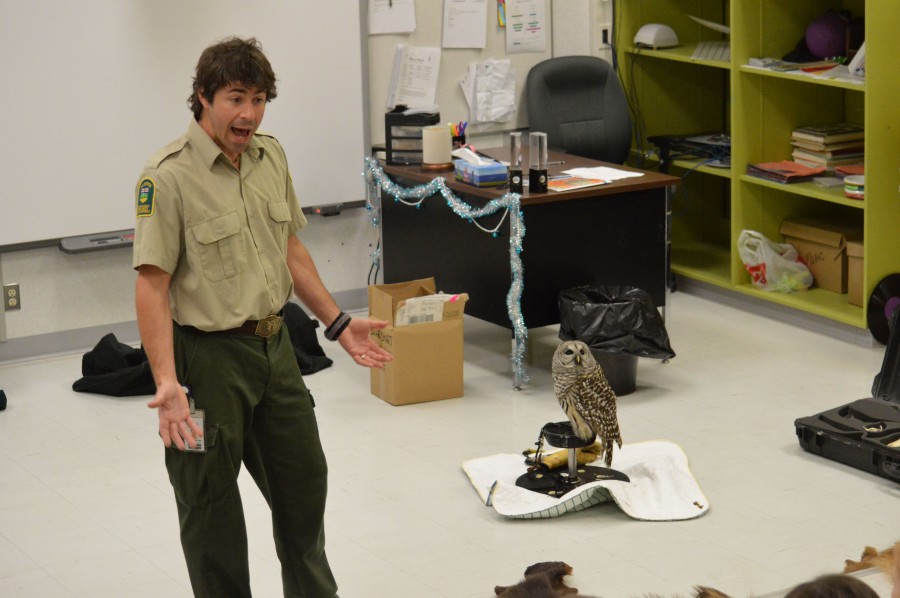Students at Pat Hardy Elementary School recently got an education in local wildlife — and they were loving every minute of it!
On Thursday, February 19 and Friday, February 20, Curtis Stambaugh, Senior Wildlife Biologist at ESRD (Environmental and Sustainable Resource Development, a ministry of the Government of Alberta), ran a number of wildlife programs at Pat Hardy Elementary School. Each presentation lasted 30 minutes, during which time students in Kindergarten, Grade One and Grade Two got to see a showcase of various skulls, furs, and tracks — all of which are designed “to help foster an appreciation for our local wildlife and raise awareness of safety around wildlife,” the program directive describes.
According to Stambaugh, the recent programs emphasized “general wildlife awareness, some easy dos and don’ts when it comes to humans and wildlife contact.”
“The students at Pat Hardy are a little young for the really detailed ‘safety’-oriented stuff,” Stambaugh explains, “but there are some important elements, like never approaching wildlife and not feeding wildlife, that are always important to get them aware of early on.”
Stambaugh explains that his programs are largely “oriented to getting kids excited about wildlife and nature and ensuring they know that the outside world is fun and enjoyable, and that they need not fear it.”
“They can put their Ipods and Gameboys down and get some fresh air — and they can have fun doing it,” Stambaugh continues. “This is what we call gaining ecological literacy: gaining a better understanding of your surroundings, and recognizing that we are a big part of it and are not isolated from it.”
“Our wildlife biologists have always made efforts to visit local classrooms to provide wildlife information,” states Heather Robertson, Regional Education and Outreach Specialist for ESRD. The purpose of these programs is to garner “an appreciation for wildlife diversity and an understanding of how our actions impact them.”
“As well,” Robertson emphasizes, “the hope is that students will learn wildlife safety etiquette — how to prevent wildlife encounters and how to react if encounters do occur.”
“It is very important to instill an environmental awareness or ecological literacy in children early on so they can be aware of their natural surroundings, and so they can have a better appreciation for wildlife and a better understanding of how our own impacts affect them and their habitats,” states Robertson. “Students will, hopefully, learn that the wildlife around them are fascinating creatures with interesting qualities and characteristics,” Robertson continues, “and that they have incredible adaptations that help them survive in their current environment.”
The students, according to Stambaugh, respond well to the experience. “They are like sponges,” Stambaugh states. “They love to see the displays and unique features of wildlife.”
Of course, the ESRD’s special guest helped to facilitate that excitement. Colonel Slade, a 12-year-old Barred owl belonging to the ESRD’s Fish and Wildlife Department, is often brought in for educational purposes and, as usual, she was the star of the program. “She is a celebrity of sorts,” muses Stambaugh, who is happy with the success of the program.
“I find this early on appreciation tends to lead to less fear of wildlife and a better understanding of what to do in the event of wildlife encounters,” Stambaugh states, stressing the importance of the program’s role within the community.
Anyone interested in learning more can email Heather Robertson at heather.l.robertson@gov.ab.ca to inquire about the educational opportunities ESRD can provide.








More Stories
Community spirit shines at large-scale youth baseball event
Birthday party chaos sung beautifully by Pumpjack Players’ youth in spring musical
Gearing up for another season of cars, cruising and camaraderie